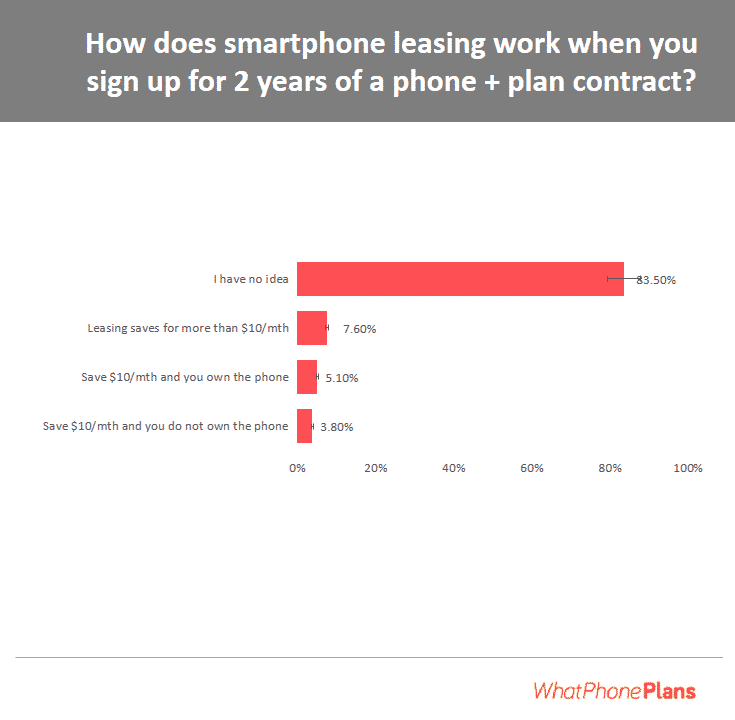Telstra scraps mobile leasing plans
Throughout the year, Telstra have announced several changes to their services. The telco revamped its Prepaid Max plans earlier in the year, and recently refreshed its postpaid plans. Telstra even replaced its Thanks rewards program with a new Telstra Plus scheme. These structural revisions have been a long time coming, all stemming from the telco’s T22 strategy for simplicity and flexibility.
The telco’s latest announcement gets rid of leasing plans. These changes cover SIM-only and mobile handset plans for both small businesses and consumers. Some of the changes announced include:
- No lock-In contracts – All Telstra plans will now be flexible. Subscribers are free to change their plans and preferences every month without incurring any penalty fees.
- No excess data charges – With Telstra’s new business model, subscribers need not fear expensive charges once they’ve exhausted their allocated data bundle for the month. Instead, the Telco has introduced a service known as the ‘Peace of Mind Data’, which caps a subscriber’s data speed at 1.5Mbps (Megabytes Per Second) once allocated data has been exhausted. Previously available to only higher post-paid plans, this service is now available to all post-paid users.
In addition, Telstra will be scrapped its classic handset lease plans after the 25th of June, 2019. Formerly, Telstra offered two options to acquire mobile devices and phone plans; a handset lease or a service referred to as ‘New Phone Feeling’.
On a classic handset lease, consumers were required to sign a minimum 24-month contract in order to access the device. If the device is damaged during the lease period, the customer was expected to pay exorbitant repair prices – often up to $499 depending on the nature of the damage. On the ‘New Phone Feeling’ plan, consumers are offered more flexible lease requirements which will be discussed later in this article.
Although phone leasing plans are popular in Australia – almost every major Telco offers the service – many individuals aren’t really aware of how exactly these schemes work. Just take a look at the survey below.

A survey showing the most common answers offered by Australians when asked how smartphone leasing worked.
What Are Phone Leasing Plans?
Telcos offer phone lease plans (or contracts) which allow subscribers rent selected mobile devices for period of time. This could be between 24 to 36 months. On procuring a phone lease, the subscriber will pay a stipulated amount of money – often in conjunction with a set phone bundle – to the Telco as a means of ‘paying off’ the device.
Upon the completion of the lease, subscribers can either upgrade their devices to a newer model (in which case the monthly payments on the contract continue) or purchase the device they used on lease at a ‘fair market value’. These end-of-contract clauses are often dependent on the chosen.
It’s important to note that, should the device incur any damages whatsoever during the lease period, the consumer will be held liable and can face repair fees of up to $499.
Why lease a phone?
Individuals enter phone lease contracts for various reasons. Predominantly, many consumers opt to lease mobile devices because this aids them in curbing the expenses that come with purchasing a smartphone. Leasing a phone can save you up to $10 dollars per month. Here are some other reasons subscribers lease phones;
- Frequent upgrades – if you like to upgrade your mobile device frequently, phone leases are a great option.
- Saving on your monthly phone bill – As stated, phone leases allow its subscribers save money on monthly phone bills as they are not as expensive as purchasing the phone.
- Careful with devices – Phone leases appeal to individuals who are very careful with their smartphones.
What happens to Telstra customers on existing leases?
Customers with existing Telstra lease contracts are unaffected by the telco’s lease program elimination. At the end of a 12-month period – from the time the lease was established – customers will be able to upgrade their devices.
In order to upgrade a device, Telstra customers will be required to choose a device on a 24 to 36-month plan and add its cost to their month-on-month phone bills. They are then required to pay a $99 upgrade fee. If your device lease is older than 18 months, you will not be required to pay the fee. Once paid, the consumer will be required o return the phone to Telstra in ‘good working condition’ – free of cracks and breaks, all parts working optimally. If returned in less than optimal shape, a fee of up to $499 will be incurred for damages.
If the consumer prefers not to upgrade their device, all they would need to do is wait for the lease period to expire and return the device or buy it at its current market value.
Final words: The future of Telstra phone lease scheme – Telstra’s ‘New Phone Feeling’
Although the Telco no longer offers handsets on lease, consumers can still enjoy mobile upgrades under phone plans. This service is referred to as the Telstra ‘New Phone Feeling’.
Under the New Phone Feeling, consumers can opt to purchase a handset from a selection of phones offered by the telco. Once purchased, the consumer can decide to spread the payment over a 24 or 36 month period.
In the last 12 months of the payment term, the consumer is allowed to upgrade their current device without having to pay off its balance. This is activated by a one-off fee of $149. Once paid, the owner is given 14 days to hand in the existing mobile device. Once deemed in good working condition, the consumer will enter a new 24 to 36 month payment term for the new device and start using it.
Sources